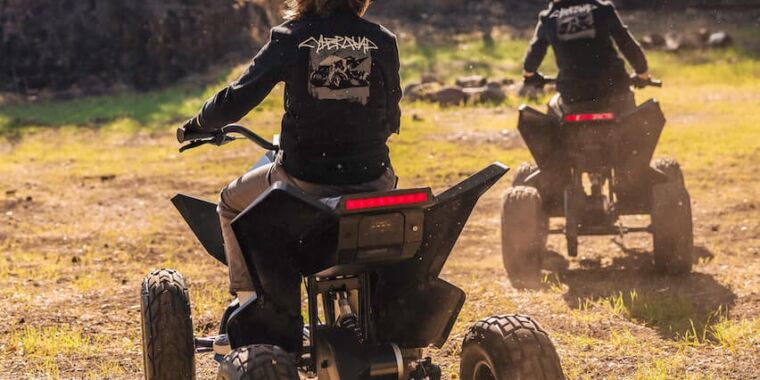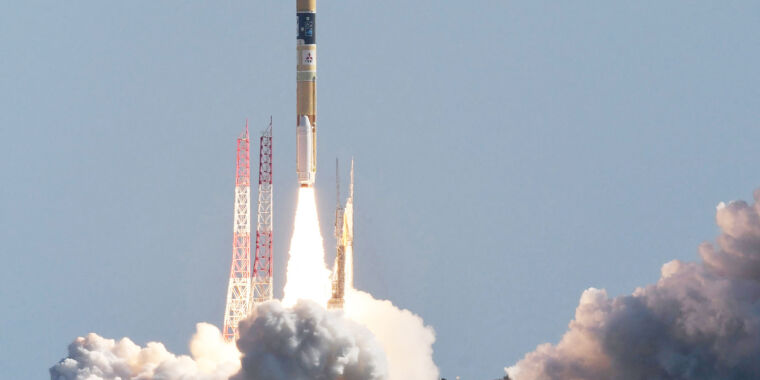
Domenico Camardo/Herculaneum Project
Archaeologists have announced the “sensational” discovery of the partially mutilated skeletal remains of a middle-aged man who perished on the beach at Herculaneum during the eruption of Mount Vesuvius in 79 CE. It’s the first excavation of the site in nearly three decades, and Herculaneum Archaeological Park Director Francesco Sirano expects to find even more victims’ remains as the excavations continue.
Eagle-eyed excavators spotted a couple of leg bones sticking out of the edge of an escarpment; a prior excavation had chopped the skeleton off at the feet. Experts estimate that the man was between 40-45 years old. The remains were found lying with the head pointing back in the direction of the sea and surrounded by carbonized wood, including a roof beam that could have crushed the man’s skull. The victim’s bones were a reddish color, which Sirano identified as stains left by the man’s blood.
“We can learn many things from his bones: his exact age, what jobs he may have done, whether he had any illnesses,” Domenico Camardo told reporters. Camardo is chief archaeologist of the Herculaneum Conservation Project.
There’s a long and occasionally contentious history among archaeologists who study the remains of the Vesuvius victims. As we’ve reported previously, the eruption released thermal energy roughly equivalent to 100,000 times the atomic bombs dropped on Hiroshima and Nagasaki at the end of World War II, spewing molten rock, pumice, and hot ash over the cities of Pompeii and the nearby city of Herculaneum in particular. Pliny the Younger wrote of “broad sheets of flame” and a rain of ash in a letter to the historian Tacitus (the letter is the sole surviving eyewitness account of the disaster).
While it took three days to destroy Pompeii, Herculaneum was destroyed in roughly two hours, according to Miami University archaeologist and historian Steven Tuck. Excavations in the 1980s and 1990s unearthed the well-preserved skeletons of more than 300 victims piled up in boat sheds, seeking shelter from the volcano’s wrath. Archaeologists made fiberglass casts of each set of remains where it was found.
Others gathered on the beach to wait for help. Most never made it off. Unless people managed to jump onto a ship in the harbor in the first 10 minutes, they would have succumbed to the pyroclastic flows (fast-moving hot ash, lava fragments, and gases) that swept through and obliterated the town. If the ash didn’t get them, the tsunami that developed in the wake of the eruption, and the accompanying earthquake (and aftershocks), would have done so.
Their last moments would have been horrendous. “It was one o’clock at night, when the pyroclastic surge produced by the volcano reached the town for the first time,” Sirano told Italian news agency ANSA. “A white-hot cloud that raced towards the sea at a speed of 100 kilometers per hour, which was so dense that it had no oxygen in it. In the space of a few minutes, [the inferno] engulfed and swallowed up the upper part of the town, uprooting the roofs and mowing down men and animals with a heat such as to make their bodies evaporate.”

Pier Paulo Patrone
It’s well-known that the vast majority of the victims died of asphyxiation, choking to death on the thick clouds of noxious gas and ash. But a 2001 study in Nature estimated a temperature of 300° Celsius (572° Fahrenheit) for the pyroclastic surge that destroyed Pompeii, sufficient to kill inhabitants in fractions of a second. Back in 2018, we reported on the conclusion of University of Naples archaeologist Pierpaolo Petrone (one of the co-authors of the 2001 Nature paper) that inhabitants of Herculaneum may have suffered a similar fate. The heat was so extreme in some places that it vaporized body fluids and exploded the skulls of several inhabitants unable to flee in time.
Last year, Petrone determined that the heat also fused brain tissue into glass in one victim, according to a short paper he published in the New England Journal of Medicine. Not everyone agreed with Petrone et al.’s conclusions. Tim Thompson, a forensic anthropologist at Teesside University in the UK, told bioarchaeologist Kristina Killgrove at the time that he doesn’t find the vaporization theory plausible, preferring his own alternate theory that the victims at Herculaneum may have been essentially “baked” by lower-intensity heat.
Undaunted, Petrone published another paper in October 2020 reporting the discovery of preserved human neurons in the victim with the “glassified” brain. Thompson told Ars at the time that he found the paper interesting, although he criticized the authors for not including their raw data—just a list of the proteins and related gene expressions. Granted, brains don’t typically survive for long after death; brain tissue is typically the earliest thing to decompose in most contexts. But it is not unprecedented, and Herculaneum was not a typical decompositional context. Per Petrone, the unique vitrification process that occurred at Herculaneum apparently “froze” this particular victim’s neuronal structures, preserving them intact.

Pier Paolo Patrone
A study released earlier this year of the remains of one victim, who died on the beach not far from a small naval vessel, suggests that he might have been a senior naval officer—possibly a rescue mission leader who arrived just in time to die with the people he was trying to save. Skeleton Number 26 was found facedown, with one arm stretched out as if to break his fall. He was probably knocked down by the blast that killed him and everyone else on the beach.
Parts of the skeleton’s armor, along with weapons and a leather knapsack, survived nearly 2,000 years of burial. Based on his high-end weapons and gear, Sirano and his colleagues suggested that he was probably a high-ranking officer in Pliny the Elder’s imperial fleet from Misenum, sent to rescue survivors from the beach at Herculaneum.
It’s possible that this new skeleton was also a member of Pliny the Elder’s rescue team, since the man had not taken refuge in the boat houses and fishermen’s storehouses, and was found some 20 meters from Skeleton Number 26. Alternatively, per Sirano, he may have been “one of the fugitives, who left the group to reach the sea hoping to embark on one of the rescue launches, even perhaps the last and most unfortunate of a group that had managed to set out to sea.”

Domenico Camardo
The skeleton appeared to be clutching what was left of a small leather bag containing a wooden box with a protruding iron or bronze ring. “He was possibly escaping with his treasures,” Nunzia Laino, a conservator who will be among the team analyzing the remains, told the Guardian. “The objects found with the human remains are of a particular complexity. There are also fabric scraps, so they will have to be carefully extracted before studies can be done.”
This new excavation has also unearthed more than 150 fragments of wood, thrown toward the water by the sheer force of the eruption. The archaeologists also uncovered beams, door and window frames, and a “perfectly preserved” 34-foot plank that took 12 site workers to move, likely used as scaffolding in one of the destroyed buildings. The ultimate goal of this project is to recover the ancient beachfront and hopefully make it accessible to the public by 2024.
“It’s helped enormously to understand both the last moments of the site, but also the 100 years running up to it,” Andrew Wallace-Hadrill of Cambridge University, a former director of the Herculaneum Project, told NBC News. “The power of nature is absolutely awesome, and to be under a volcanic eruption is just unimaginably violent. The site sits there peacefully in the sunshine and it seems so idyllic, and you have to explain to people that this has been through the most violent eruption.”








